Items Under Tag: children
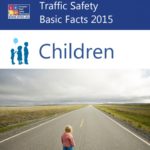
Road Safety of Children in the EU is highlighted at the Traffic Safety Basic Facts 2015 available at the European Road Safety Observatory of the European Commission. These Traffic Safety Basic Facts contain a comprehensive series of statistical tables with the latest available data from the CARE database of the European Commission.
About 640 children died in road accidents in 2013 in the EU countries. The number of children killed in road accidents fell from 1.519 in 2004 to 640 in 2013, a ten-year reduction of 58%. 41% of children road fatalities were travelling by car or taxi whilst 38% were pedestrians. 

The global campaign for the Third United Nations Global Road Safety Week, organised by the UN Road Safety Collaboration took place the Week 4-10 May 2015, on the theme children and road safety. The campaign #SaveKidsLives was seeking to highlight the plight of children on the world’s roads; generate action to better ensure their safety; and promote the inclusion of safe and sustainable transport in the post-2015 development agenda. The campaign invited all road safety policy-makers and advocated to “sign it”, “show it”, and “deliver it” to those in charge of road safety in countries and communities during the Week.  Hundreds of international and national organisations participated actively at the campaigns for the road safety of children, including the World Health Organisation (WHO) which issued the ten strategies for keeping children safe on the road
Hundreds of international and national organisations participated actively at the campaigns for the road safety of children, including the World Health Organisation (WHO) which issued the ten strategies for keeping children safe on the road  , the European Commission
, the European Commission  , the International Transport Forum
, the International Transport Forum  and the NTUA
and the NTUA  .
.
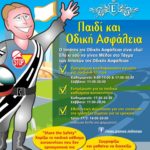
The 8th Road Safety Week organised by the Road Safety Institute ‘Panos Mylonas’ and the Hellenic Institute of Transportation Engineers on 16-23 March 2015, under the framework of UN activities for Road Safety 2015, with focus to children traffic safety. Most of the activities of this year’s road safety day took place in Athens and in Patras and were devoted to children with the interactive traffic education program ‘On the Road to Safety’. 

A book titled ‘My friend the Βicycleman‘ has recently been published by the Ministry of Infrastructure, Transport and Networks as a tool to improve children’s education on road safety and prepare the future drivers. The book aims to help children understand and apply the basic rules of safe and responsible driving during riding their bike in a simple and fun way. 

An event on “Child and Road Safety” is organised by the Ministry of Infrastructure, Transport and Networks under the Greek Presidency, which will take place on 5 March 2014, in Athens, at the Ministry Auditorium, on the occasion of the official release of children’s road safety educational book ‘My friend the bike’ and children’s song ‘Mind-Warning’. 
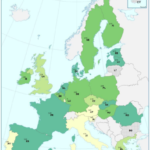
Road Safety of Children in the EU is highlighted at the Traffic Safety Basic Facts 2012 available at the Road Safety Knowledge System of the DACOTA project within the framework of the European Road Safety Observatory of the European Commission. Almost 800 children (<15 years old) were killed in road traffic accidents in the EU countries in 2010. This figure represents a fall of over a half in relation to the 1.862 children fatalities since ten years before in 2001. 
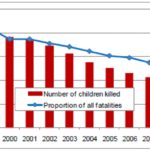
Road Safety of children in the EU is highlighted at the Traffic Safety Basic Facts 2010 recently released at the European Road Safety Observatory of the European Commission as prepared by the DACOTA project. Almost 980 children (<15 years old) were killed in road traffic accidents in the EU countries in 2008. This figure represents a 55% decrease in relation to the 2.155 children fatalities since ten years before in 1999. 

The conference Child Safety in the car – The Greek Reality – The Norwegian/Scandinavian model, organised by the Norvegian Embassy took place in Athens, in November 2009.
NTUA presented ‘Use of child seat in Greece’. ![]()
In order to ensure that children are as safe as possible on the roads, everyone needs to be aware of the risks and how things can be improved. ![]()
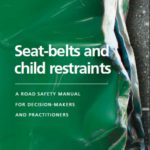
The fourth in this series of good practice manuals, titled ‘Seat-belts and child restraints: a road safety manual for decision-makers and practitioners‘, jointly prepared by GRSP, WHO, the FIA Foundation and the World Bank, focuses on seat-belts and child restraints. The manual is a practical guide to implementing, enforcing and evaluating seat-belt and child restraint programmes, and consists of a series of ‘how to’ modules. 
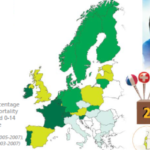
In February 2009, ETSC published a PIN Flash concerning children’s road safety. Road safety of children has improved considerably in all 30 countries covered by PIN over the past decade. Portugal achieved the best annual average reduction in child road mortality of 15%. Bulgaria, Hungary, Italy, Czech Republic, Greece and Romania performed poorly with average annual reductions of less than 5%, while EU’s average annual reduction is 7%. 
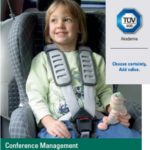
The 5th International Conference on Protection of children in cars took place in Munich, in December 2007. An interdisciplinary forum of engineers, experts in biomechanics and pediatrists in children’s hospitals were in the focus as well as the advances in child restraint systems and their interaction with the car.![]()
NTUA presented ‘How safe are children in cars on European roads?’.![]()
![]()







































































































































































